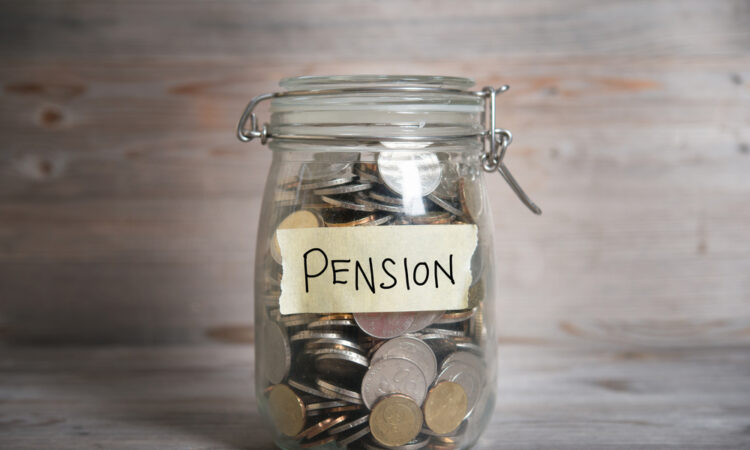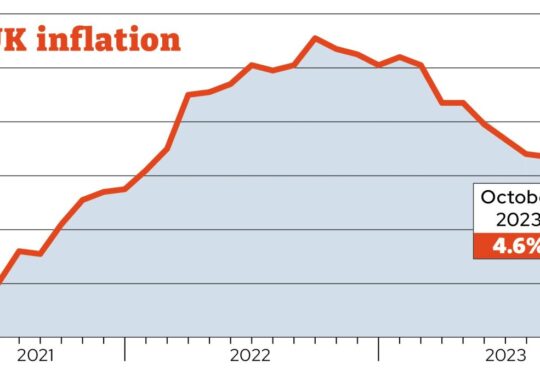
A Financial Black Hole
In 1908, the new Chancellor of the Exchequer, David Lloyd George (1863-1945), announced plans to “provide an honourable sustenance to deserving old age.” The government would pay a state pension of five shillings a week (£13 a year) to every citizen over the age of 70, except those earning over the princely sum of £26 per annum. He estimated that it would cost the nation £16m a year.
In the 2023-24 tax year, state pensions will cost the UK government £105bn. That’s more than 6,500 times the amount Lloyd George budgeted for.
When Lloyd George introduced his pensions, life expectancy in the UK was 49 for men and 53 for women. Now, it is 79 and 83 respectively, and the state-pension age has been set at 66 for both sexes, following the equalisation of state-pension ages demanded by the EU. As late as 1945, the average man might expect to claim his state pension for less than two years (the average woman for slightly longer). Now, the average man can look forward to 13 years of state beneficence.
There are just two ways that governments can mitigate the rising costs of state retirement benefits. Either they can raise taxes or they can raise the age at which state pensions become payable. The UK state-pension age will rise to 67 by 2028, although it is now rumoured that the Treasury wants it to rise to 68 in 2035 – much earlier than previously scheduled.
If state spending in the UK is out of control, tax revenues are currently just about holding up. But the UK government had to borrow £27bn in the month of December 2022 alone. That was over £400 for every man, woman and child in the country, whether earning or not – more even than most people’s monthly credit-card bill on a per-capita basis.
French Connection
France’s president, Emmanuel Macron, has been trying desperately to raise the state-pension age from 62 to 64. This has provoked mayhem in the form of widespread strikes and protests. If you think the UK is experiencing unrest – take a look at France.
In 1981 the incoming socialist president François Mitterrand reduced the retirement age from 65 to 60. I remember that time well because I was living in Paris that year. Mitterrand also appointed two communist ministers to his cabinet and nationalised the banks. Just eight years before the fall of the Berlin Wall, leftist ideology in Europe seemed triumphant – even if the US, under Ronald Reagan, and the UK, under Margaret Thatcher, were both heading in a quite different direction.
In 1980, France had 30.4 million people of working age (20 to 64) and 7.4 million pensioners aged over 65. Today, France has 31.7 million people aged between 20 and 60 and 17.7 million people over 60. That’s an additional 10 million pensioners in just over 40 years, with roughly the same number of people in gainful employment. And, according to UN forecasts, the French working-age population is now in gentle decline and will be down to 31.2 million by 2031 – just as the number of state pensioners will rise to 19.7 million. That would equate to a dependency ratio of 1.58 people in work to every one pensioner. Even given the eagerness (thus far) of institutional investors to buy French government debt, it is difficult to imagine that this would be sustainable.
Jacques Chirac (president of France 1995-2007) tried to reform the pension system but gave up in the face of widespread opposition. Finally, the retirement age in France was raised from 60 to 62 under the presidency of Nicolas Sarkozy. That provoked bitterness and demonstrations across France.
But, arguably, Macron’s room for manoeuvre is tighter than Sarkozy’s was. Some groups of workers are permitted to retire early: for example, train drivers can retire at 52. Any change in the age at which retirees become eligible for state pensions in a democracy should be signalled several years in advance. Macron’s proposal is to raise the state-pension age incrementally from 2027 onwards, reaching 64 by 2030. This will be accompanied by modest increases in social charges (the French equivalent of national-insurance contributions in the UK). Even if he is able to get that proposal through, France’s national finances are likely to decline further as the decade continues.
France has the third-highest level of national debt in the world in absolute terms, after, of course, the US and Japan. Its structural fiscal deficit is deteriorating. It has an ageing population which is highly resistant to any perceived cuts in what French people call their ‘privilèges’. France enjoys higher life expectancy than both the UK and Germany – a reflection of the country’s undoubted quality of life. But that has fiscal consequences, given its low retirement age as compared to the UK and Germany.
France’s debt-to-GDP ratio is currently running at around 114 percent − well above the UK’s of about 99 percent and Germany’s of around 70 percent. France’s trade deficit is running at around €100bn and rising. French government spending amounts to 55 percent of GDP – the highest in the OECD. Thus, French government bonds carry a spread over German government bonds of equivalent maturity of about 50 basis points.
If France is a country living beyond its means it is still a rich one too. Its infrastructure is excellent. Its power industry is a benchmark across the world. Regular readers will be aware of my view that the UK threw away its leadership in nuclear-power technology only for France to grab the ball and run with it. France is a global leader in aerospace. It has a stable of outstanding companies. The richest man in the world is French. Bernard Arnault, the principal shareholder and chief executive of LMVH is worth €190bn according to the Bloomberg Billionaires Index.
How is Macron’s pension reform bill going? Well, on Tuesday evening L’Assemblée Nationale (the National Assembly, ie the lower house of the French parliament) rejected a critical clause in the latest iteration of the legislation, by 256 votes to 203 with eight abstentions. This clause offered concessions to people who had been in continuous employment over their entire careers, including people who had started work in their teens. But this was judged as insufficient by deputies on both the left and right. Macron’s centrist La République en Marche (LREM) party holds just 245 seats out of 577 in the National Assembly.
It is now crunch time. Debate on the first reading of the reform bill in the National Assembly must end by the midnight today (17 February). That is why the passage of the necessary legislation through the French legislature might be scuppered altogether if the lower house votes no. If it votes yes, then the bill goes to the Senate (the upper house) where it reportedly has strong support.
Yes, France is a rich and successful country but, as I wrote recently, rich countries can become poor if they live beyond their means for too long. Much of Europe is experiencing a similar existential challenge – but the political consciousness of this potential fiscal catastrophe is much dimmer than that of the “climate catastrophe”.
Funding Models
This is not just a European problem. In dynamic South Korea, policymakers recently warned that the national pension fund will become insolvent in three decades. South Korea, like Japan, suffers from the demographics of ageing: or, if you prefer − too few babies.
But the way in which state pensions are funded in the UK makes us especially vulnerable to increasing life expectancy. A reader – Stephen − commented, in response to one of my recent articles, that state-pension payments are not benefits, but rather the just return for paying into “the scheme” for 35-40 years. These are sentiments that my long-dead parents would have endorsed, as would many of my alive and kicking senior friends.
The only problem with this is that there is no state-pension fund. Although we imagine that we are paying for our state entitlements (including health care, jobseekers’ allowance when required and state pension) through our national-insurance contributions, in fact, all tax revenues go into the same state-controlled slush fund, and all expenditure comes out of the same.
The state pension is not “funded” as even most public-sector pension schemes are. One of the most generous of these is the Universities Superannuation Scheme (USS). (Striking lecturers – please take note because you are privileged.) There is a National Insurance Fund, however, set up by the post-war Labour government of 1945-51, which is still reviewed by government actuaries. They predict that it will be in deficit to the tune of £7.1bn in 2023-24. In practice, though, state-pension payments are paid entirely out of tax revenues, topped up with (ever increasing) government borrowing.
There will be those who argue that any shortfall in state-pension provision should be financed by additional (that is, increased) taxes – largely on “the rich”. The problem with that, as ever, is that such additional taxes would be paid mainly by people who are already struggling to cope, including some of the over-stretched middle classes – especially given the current cost-of-living crisis in which prices are rising much faster than wages.
We should celebrate the fact that people are living longer – and that, prospectively healthspans will be prolonged as well as lifespans. It is true that many countries have seen a dip in life expectancy since the coronavirus pandemic as “excess deaths” (that is, the number of deaths occurring above the medium-term rolling average) have spiked. In that respect, some countries have fared worse than others. Most European countries have managed to bounce back but the US has continued to see a decline in life expectancy, partly because of lower vaccination rates as well as a devastating opioid epidemic.
Few professional people want to be entirely dependent on the state for income in their declining years. The UK has had a reasonably good record of fostering professional and private pension funds (in both the public and private sectors) which provide superannuation to members who have contributed for a qualifying number of years. But defined-benefit schemes have been in retreat for several years as pension-fund deficits accumulate. These deficits have risen because investment returns have fallen in the era of the near-zero interest rate, and because actuarial adjustments to reflect lengthening life spans have inflated pension-fund liabilities.
If our Chairman, Jim Mellon, is right to think that we are on the cusp of developing new technologies that will lengthen human lifespan dramatically – and many investors think he is on to something big – then the dependency ratio will rise to unsustainable levels relatively quickly.
The Sole Solution
If we wish to sustain a generous welfare state with people retiring long before they are incapable of working, then the only solution is to secure much more dynamic economic growth than the UK and other countries have achieved since the financial crisis of 2008-09. That was the fundamental mission statement of the 46-day government of Liz Truss.
Whatever you may think of her qualifications for the leadership of a G7 country, (and, frankly, I always had my doubts) her reasoned analysis that there is an “anti-growth coalition” was incontrovertible. So many people want welfare, early retirement, zero carbon and the right to work from home – if at all, that is. These were the people who were most keen on obligatory lockdowns during the pandemic. Many people – such as Wales’s First Minister Mark Drakeford − desire a universal basic income (UBI) on top of all that. And yet they are sniffy about growth.
There is now a quangocracy, as I call it, of patronising institutions which exist in order to tell governments (especially Tory ones) what they can’t possibly do. There is the CBI, the IFS, the OBR, the Food Standards Agency (which wants to ban cake in the workplace) the Resolution Foundation – and the list continues.
They all come up for air when there is any new initiative to stimulate growth. Have you noticed that so many new items on BBC Radio 4’s Today Programme begin with the words “There is a warning that…”? They then go on to rubbish a government policy. But it is only when you drill down that you discover that the warning arises from some obscure (and partisan) think tank. Truss is neither delusional nor paranoid when she claims that she was driven out by a conspiracy of the anti-growth coalition.
On 15 March Jeremy Hunt will deliver his first Budget to the House of Commons. Hopefully, we shall learn more about the Sunak government’s plan to foster growth in the UK, which, naturally, I shall assess.
There are unlikely to be any surprises in the Budget in so far as pension policy is concerned. The full rate of the state pension is £185.15 per week in the current tax year, though what people actually receive can be more or less than that, depending on their national-insurance record. That is much less generous than the basic state pension in France.
But in accordance with the so-called “triple lock”, put in place by George Osborne during the Coalition government, that rate will rise by whichever of the following is highest: 2.5 percent; average wage growth between May and July (compared to the three months in the previous year); or inflation, as measured by the CPI in the year to September (which was 10.1 percent).
It is highly questionable whether the triple lock will be sustainable in the medium term. The problem for the politicians is that pensioners vote. So, whoever abolishes the triple lock will wreak their ire.
Retail investors are always told that “the value of your investment may go down as well as up”. In a righteous world, taxpayers would be informed that “the value of your entitlements may go down as well as up”. It would be much more honest. But would the politicians take the risk?
Afterword – Ballooning Mystery
The reporting of the shooting down of numerous “objects” in US and Canadian airspace last weekend has amused me. That is because journalists who write and comment for mainstream media (MSM) have been entirely baffled. They have no sources to go to and just recycle gobbets uttered by military and political spokespeople. MSM journalists never write: “We just don’t know what the hell is going on”. Rather, they are trained to expatiate without facts.
I heard one reference to extra-terrestrials on the BBC World Service’s 5amnews briefing last Monday, but that line of analysis was entirely proscribed across the rest of our national broadcaster’s output thereafter. Even though the Commander of the North American Aerospace Defence Command, when asked if aliens could be involved, replied: “I haven’t ruled anything out.” A number of sources suggested that how the three objects – variously described as capsules, one of which was “octagonal” – could remain aloft indefinitely, was a “mystery”.
White House national-security spokesman John Kirby added some detail on Monday afternoon (13 February). He said that the three objects shot down last weekend over Alaska, the Yukon (at Canadian Prime Minister Justin Trudeau’s request) and Lake Huron flew lower than the alleged Chinese spy balloon which was downed on 4 February.
That balloon had first been first spotted over Montana but was shot down near Myrtle Beach off the coast of South Carolina, having traversed the entire north-American landmass. Kirby said that the three objects were not sending out communications signals, did not have people on board and could not manoeuvre or propel themselves. The decision to shoot down the objects, he said, was taken because they posed a risk to air traffic.
The historian Niall Ferguson observed this week that the Chinese spy-balloon incident should serve as a warning that the US is ill-equipped to handle a major conflict with China. At the very least, the incident suggests that US-China relations are getting frostier. Secretary of State Antony Blinken cancelled a scheduled trip to Beijing even before the balloon came down. It will be interesting to see how China responds to the planned visit by House Speaker Kevin McCarthy to Taiwan in the spring.
Reading between the lines, what is apparent is that the US military now fears that China has acquired a game-changing technology that it does not have. When news of the first intruder – which was undoubtedly a Chinese balloon, though the Chinese claimed it was a weather balloon which had blown off course – Scientific American ran an article claiming that the balloon seemed, strangely, to be able to change course. Weather balloons normally stay aloft for a matter of hours and, literally, go with the wind. The FBI is currently analysing the debris, so we are likely to hear more about this.
As it happens, on Tuesday evening the White House admitted that the other three mysterious objects were probably not the instruments of Chinese intelligence. The objects might be “tied to commercial or research entities and therefore benign”, spokesman Kirby said. Neither US nor Canadian officials have yet located or recovered any wreckage from the three downed objects.
Curious and curiouser. As a non-journalist, I openly admit that I am baffled. Though, if indeed ET is phoning home in distress, I do hope he knows that some of us humans wish him well.






